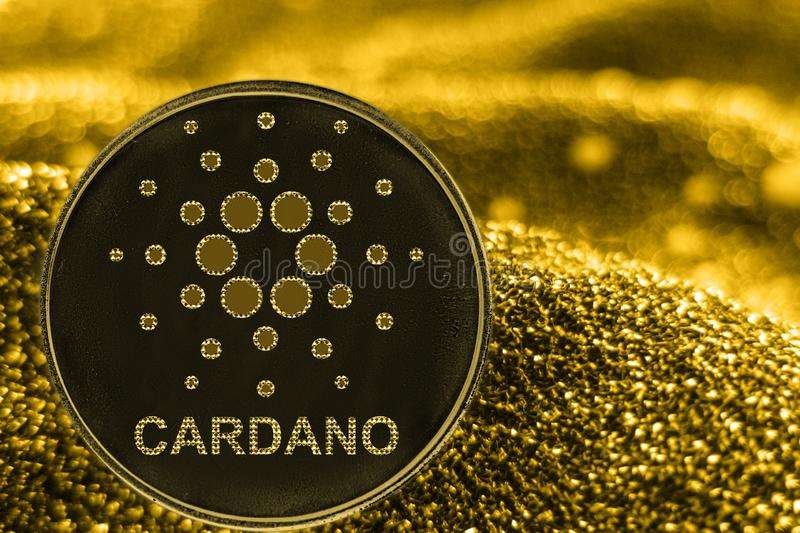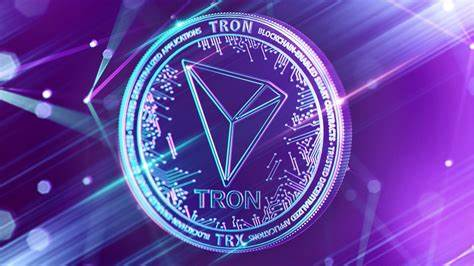The world of cryptocurrencies has undergone significant expansion over the past decade. In 2013, there were only a few crypto coins in existence, including familiar names like Bitcoin, Litecoin, and Ripple (now known as XRP). Today, the landscape is vastly different, with a wide variety of coins and tokens offering diverse use cases that go beyond simply being an alternative to centralized currencies. CoinMarketCap reports that there are now more than 25,000 crypto projects actively trading in the market.

Despite the extensive range of available cryptocurrencies, the market is still largely dominated by the two pioneers: Bitcoin and Ethereum. Together, they make up nearly 70% of the overall $1.2 trillion crypto market capitalization.
While there is a multitude of cryptocurrencies trading today, most of them hold a relatively small market capitalization. In fact, only 14 cryptocurrencies currently have a capitalization greater than $5 billion. Let’s take a closer look at the top 10 cryptocurrencies by market capitalization, excluding stablecoins from the list. Stablecoins, unlike other crypto projects, are designed to maintain a stable price and are not considered speculative investments.
Bitcoin (BTC)

Bitcoin, the pioneer of cryptocurrencies, holds the top position with an impressive market cap of $601 billion and a 30-day performance of 14.2%. Its journey began on Halloween night in 2008 when an anonymous author named Satoshi Nakamoto published the white paper that laid the groundwork for Bitcoin’s creation. Unlike traditional currencies, Bitcoin operates outside the control of centralized authorities like banks and governments, giving rise to the concept of decentralized finance (DeFi).
Ethereum (ETH)

Ethereum (ETH), with a market cap of $229 billion and a 30-day performance of 1.9%, has consistently held the second spot in the crypto market. Launched in July 2015 by Vitalik Buterin, it offers a versatile platform for developers, attracting numerous other cryptocurrencies and decentralized applications (dApps). Ethereum is particularly known for its contributions to the DeFi space and the creation of non-fungible tokens (NFTs), which represent various digital assets like art and videos.
BNB (BNB)

BNB (BNB) is the native token of Binance, the world’s dominant cryptocurrency exchange. With a market cap of $38 billion and a 30-day performance of -21.3%, BNB is widely used within the Binance ecosystem, especially for paying trading fees. Binance has also developed its own blockchain, allowing other cryptocurrencies to launch on top of it. This integration and utility have contributed to BNB’s meteoric growth since its founding in 2017.
XRP (XRP)

XRP (XRP), developed by Ripple Labs, stands out with a market cap of $25 billion and a 30-day performance of -5.8%. Unlike many other cryptocurrencies, XRP aims to streamline money transfers in a manner similar to the traditional SWIFT system. However, XRP has faced criticism for being more centralized than other cryptos due to its ties with fiat currencies.
Cardano (ADA)

Cardano (ADA), co-founded by Charles Hoskinson, one of Ethereum’s initial members, currently holds a market cap of $10 billion, but its 30-day performance shows a decline of -23.0%. Cardano’s notable feature has been its use of a proof-of-stake validation mechanism, which is more energy-efficient compared to Bitcoin’s proof-of-work. Interestingly, Ethereum also transitioned to a proof-of-stake model in 2022.
Dogecoin (DOGE)

Dogecoin (DOGE), initially created as a joke based on an internet meme, boasts a market cap of $9 billion, despite its lack of inherent value. Founded by Billy Markus, DOGE saw a significant surge during the pandemic, reaching a market cap of nearly $90 billion before experiencing a decline. Nonetheless, it continues to have a substantial presence in the crypto market.
Solana (SOL)

Solana (SOL), once hailed as the “Ethereum killer,” has a market cap of $7.7 billion, but its 30-day performance shows a decline of -12.5%. Promising faster speeds and lower fees compared to Ethereum, Solana encountered setbacks, including network outages and projects leaving for rival blockchains. Its association with a disgraced former FTX CEO further impacted investor confidence.
Litecoin (LTC)

Litecoin (LTC), created in 2011 as a more efficient version of Bitcoin, now has a market cap of $7.4 billion. While it was once the second-largest cryptocurrency, Litecoin has experienced a decline in prominence and usage over the years.
Tron (TRX)

Tron (TRX), with a market cap of $6.9 billion and a 30-day return of -0.4%, started as an Ethereum token before becoming its own network. Founded by Chinese billionaire Justin Sun, Tron has gained global traction and holds a significant share in the DeFi space.
Polkadot (DOT)

Polkadot (DOT), with a market cap of $6.5 billion and a 30-day performance of -6.9%, connects different blockchains, earning the nickname “the blockchain of blockchains.” Unlike Layer 1 and Layer 2 blockchains, Polkadot operates as a Layer 0, serving as the foundation for other blockchain protocols. Its native token, DOT, plays a crucial role in governance and staking, supporting the validation of transactions.
What is cryptocurrency?
Cryptocurrencies are a form of digital currency known for their decentralized nature and secure transactions through computer networks. Unlike traditional fiat currencies, which rely on government backing, cryptocurrencies operate solely based on their programming codes. This unique feature allows them to function independently without centralized control, utilizing blockchain technology to verify and record transactions on transparent public ledgers.
Investors and enthusiasts view cryptocurrencies as private digital assets that offer various advantages. They see them as an alternative method for completing transactions, a potential hedge against inflation, a store of value during economic uncertainties, and a way to bypass traditional financial institutions. Leading cryptocurrencies like Bitcoin enable users worldwide to conduct fast and seamless financial transactions without relying on banks or intermediaries. This decentralized and borderless nature has attracted a growing number of users seeking more control over their financial activities.
How to buy cryptocurrency
Cryptocurrencies, similar to stocks and exchange-traded funds, are traded on various exchanges. However, not all brokers support trading in cryptocurrencies beyond Bitcoin and Ethereum. So, the first step in acquiring cryptocurrency is to find a suitable broker or exchange that allows crypto trading. Some well-known options include Robinhood and SoFi for brokers, and Coinbase and Binance for leading cryptocurrency exchanges.
Once you’ve selected a broker or exchange, the next step is to create and verify your trading account. This process may involve submitting identification documents like a photo ID or a bank statement to ensure your identity.
With your verified account, you can proceed to deposit funds and buy your preferred cryptocurrency using its unique three- or four-letter ticker symbol, much like how stocks are identified. As an additional security measure, some traders choose to store their cryptocurrencies in a digital wallet. This digital wallet provides an extra layer of protection for their assets.
